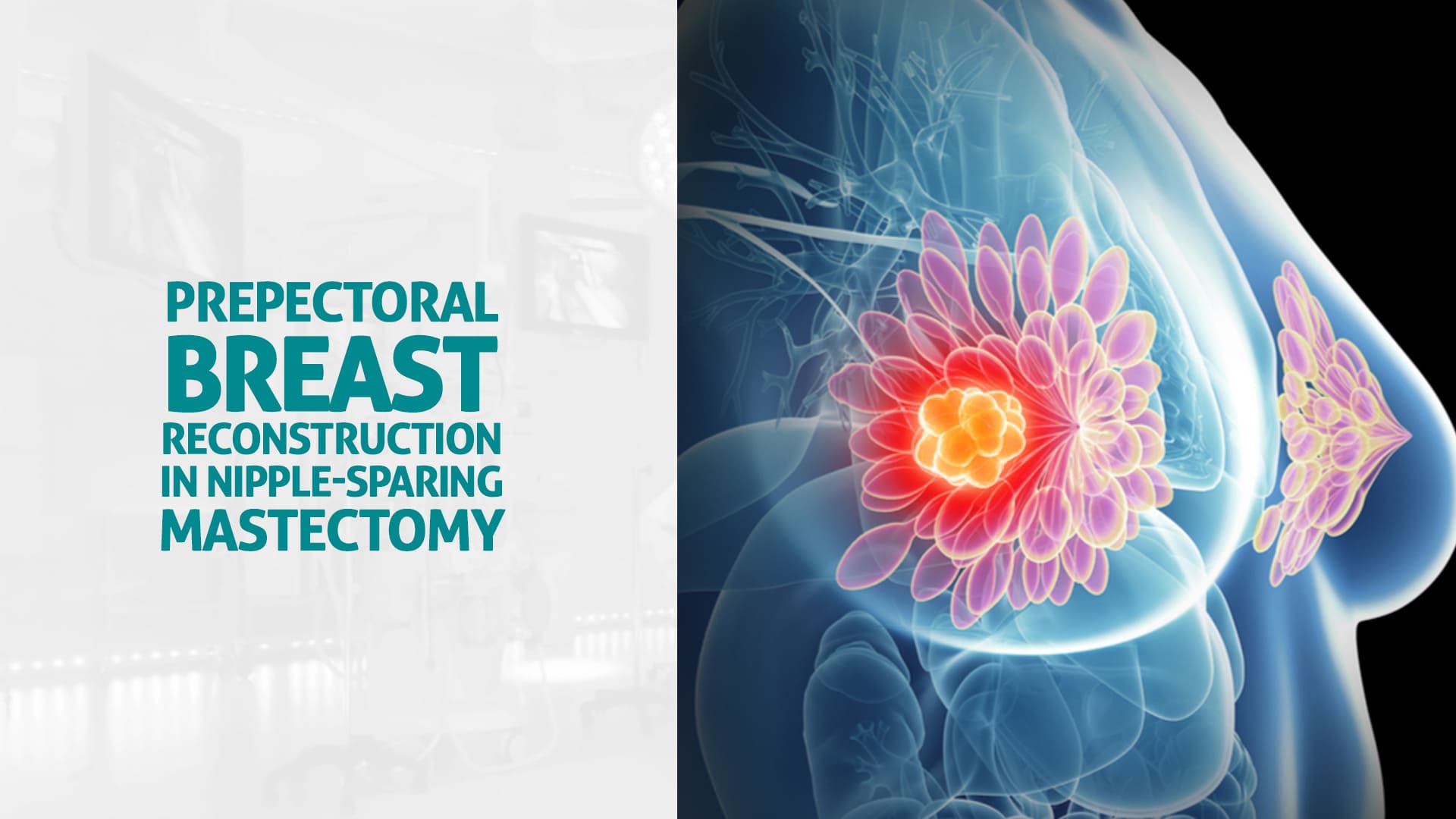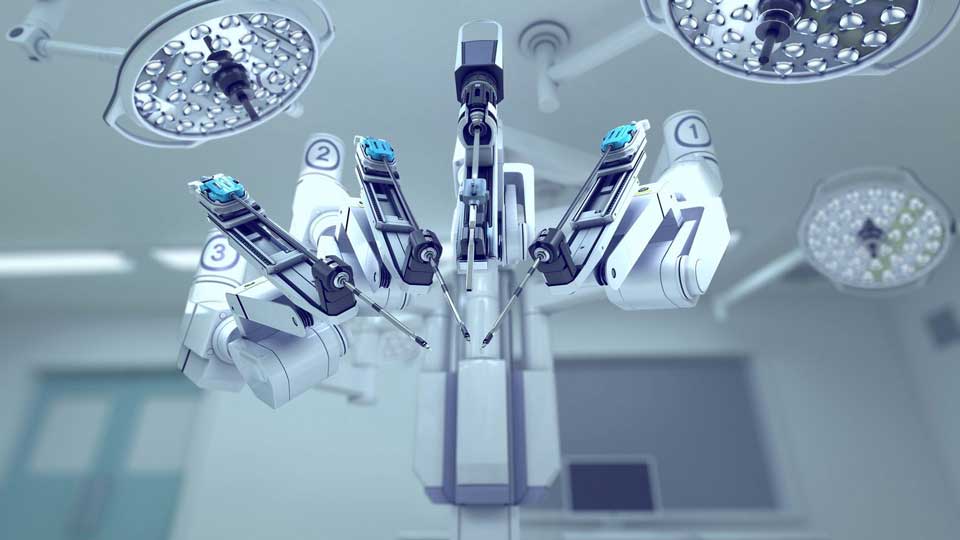Mastectomy Procedure
08
Nov
2021
What is Mastectomy?
A mastectomy is a surgery to remove entire breast tissue from a breast as a way to treat or stop breast cancer.
For those with early-stage breast cancer, a mastectomy might be one treatment option. Breast-conserving surgery (lumpectomy), in which only the tumor is removed from the breast, might be another option.
Deciding between a mastectomy and lumpectomy could be difficult. Both procedures are equally effective in preventing a recurrence of breast cancer. But a lumpectomy is not an option for everyone with breast cancer, and others prefer to go through a mastectomy.
Newer mastectomy techniques could preserve breast skin and allow for a more natural breast appearance following the procedure. This is also called skin-sparing mastectomy.
Surgery to restore shape to your breast — known as breast reconstruction — might be done at the same time as your mastectomy or during a second operation at a later date.

Why is it done?
A mastectomy is used to remove the entire breast tissue if you have breast cancer or are at a very high risk of developing it. You might have a mastectomy to remove one breast (unilateral mastectomy) or two breasts (bilateral mastectomy).
Mastectomy for breast cancer treatment
A mastectomy might be a treatment option for many types of breast cancer, including:
- Ductal carcinoma in situ or DCIS is a non-invasive breast cancer
- Stages I and II (early-stage) breast cancer
- Stage III (locally advanced) breast cancer — post-chemotherapy
- Inflammatory breast cancer — after chemotherapy
- Paget's disease of the breast
- Locally recurrent breast cancer
Your doctor might recommend a mastectomy instead of a lumpectomy plus radiation if:
- You have two or more tumors in separate regions of the breast.
- You have extensive or malignant-appearing calcium deposits (microcalcifications) throughout the breast that have been determined to be cancer after a breast biopsy.
- You have previously had radiation treatment to the breast area and the breast cancer has recurred in the breast.
- You are pregnant and the radiation creates an unacceptable risk to your unborn child.
- You have had a lumpectomy, but cancer is still present at the edges (margin) of the operated region and there is concern about cancer extending elsewhere in the breast.
- You carry a gene mutation that gives you a high risk of developing a second cancer in your breast.
- You have a big tumor relative to the overall size of your breast. You might not have enough healthy tissue left after a lumpectomy to achieve an acceptable cosmetic result.
- You suffer from connective tissue disease, like scleroderma or lupus, and might not tolerate the side effects of radiation to the skin.
Mastectomy to prevent breast cancer
You may also consider a mastectomy if you do not have breast cancer, but have a very high risk of developing the disease.
A preventive (prophylactic) or risk-reducing mastectomy involves removing both of your breasts which significantly decreases your risk of developing breast cancer in the future.
A prophylactic mastectomy is reserved for those with a very high risk of breast cancer, which is determined by a strong family history of breast cancer or the presence of specific genetic mutations that increase the risk of breast cancer.

Mastectomy Risks
Risks of a mastectomy include:
- Bleeding
- Infection
- Pain
- Inflammation (lymphedema) in your arm if you have an axillary node dissection
- Formation of hard scar tissue at the surgery area
- Shoulder pain and stiffness
- Numbness, especially under your arm, from lymph node removal
- The build-up of blood in the surgical area (hematoma)
Mastectomy Preparation
Meet with your surgeon and talk about your options
Prior to your surgery, you will meet with a surgeon and an anesthesiologist to discuss your operation, review your medical history, and determine the plan for your anesthesia.
This is a good time to ask questions and to ensure you understand the procedure, including the reasons for and risks of the surgery.
One issue to discuss is whether you will have breast reconstruction and when. One option might be to have the reconstruction performed immediately after your mastectomy, while you are still anesthetized.
Breast reconstruction might involve:
- Using breast expanders with saline or silicone implants
- Using your body's tissues (autologous tissue reconstruction) or,
- Using a combination of tissue reconstruction and implantation
Breast reconstruction is a complex procedure done by a plastic surgeon, also known as a reconstructive surgeon. If you are planning breast reconstruction at the same time as a mastectomy, you will meet with the plastic surgeon before the surgery.
Preparing for your surgery
You will be given instructions about any restrictions before surgery and other things you need to know or discuss, including:
- Tell your doctor about any medications, vitamins, or supplements you are taking. Some substances could intermeddle with the surgery.
- Prevent taking aspirin or other blood-thinning medication. A week or longer before your surgery, talk to your provider about which medications to avoid because they could increase your risk of excessive bleeding. These include aspirin, ibuprofen (Advil, Motrin IB, others) and other pain relievers, and blood-thinning medications (anticoagulants), like warfarin (Coumadin, Jantoven).
- Do not eat or drink eight to twelve hours before surgery. You will receive certain instructions from your health care team.
- Be prepared for a hospital stay. Ask your doctor how long you intend to stay in the hospital. Bring a robe and slippers to help make you feel more comfortable in the hospital. Pack a bag with your toothbrush and something to help you pass the time, like a book.
What you can expect
A mastectomy is an umbrella term used for various techniques to remove one or both breasts. In addition, the surgeon might also remove nearby lymph nodes to determine whether cancer has spread.
At the time of axillary node dissection, the surgeon removes a number of lymph nodes from your armpit on the side of the tumor.
In a sentinel lymph node biopsy, your surgeon removes only the first few nodes in which a tumor drains (sentinel nodes).
Lymph nodes removed at the time of a mastectomy are then tested for cancer. If no cancer is present, no further lymph nodes require to be removed. If cancer is present, the surgeon will discuss options, like radiation to your armpit. If this is what you decide to do, no further lymph nodes will require to be removed.
Removing all of the breast tissue and most of the lymph nodes is known as a modified radical mastectomy. Newer mastectomy techniques eliminate less tissue and fewer lymph nodes.
Other types of mastectomy include:
- Total mastectomy - A total mastectomy, also called a simple mastectomy, involves the removal of the entire breast, including the breast tissue, areola, and nipple. A sentinel lymph node biopsy might be done at the time of a total mastectomy.
- Skin-sparing mastectomy - A skin-sparing mastectomy involves the removal of entire breast tissue, nipple, and areola, but not the breast skin. A sentinel lymph node biopsy also might be done. Breast reconstruction could be done immediately after the mastectomy.
A skin-sparing mastectomy might not be suitable for larger tumors. - Nipple-sparing mastectomy - A nipple- or areola-sparing mastectomy involves the removal of only breast tissue, sparing the skin, nipple, and areola. A sentinel lymph node biopsy also might be done. Breast reconstruction is done immediately afterward.

Before the procedure
Your doctor or nurse will inform you when to arrive at the hospital. A mastectomy without reconstruction generally takes one to three hours. The surgery is usually done as an outpatient procedure, and most people go home on the same day of the operation.
If you are having both breasts removed (a double mastectomy), expect to spend more time in surgery and possibly an additional day in the hospital. If you are having breast reconstruction following a mastectomy, the procedure also takes longer and you might stay in the hospital for a few additional days.
If you are having a sentinel node biopsy, before your surgery a radioactive tracer and a blue dye are administered into the area around the tumor or the skin above the tumor. The tracer and the dye travel to the sentinel node or nodes, allowing your doctor to see where they are and remove them at the time of surgery.
During the procedure
A mastectomy is generally performed under general anesthesia, so you are not aware during the surgery. Your surgeon begins by making an elliptical incision near your breast. The breast tissue is removed and, depending upon your procedure, other parts of the breast also might be removed.
Regardless of the form of mastectomy you have, the breast tissue and lymph nodes that are removed will be sent to a lab for examination.
If you are having breast reconstruction at the same time as a mastectomy, the plastic surgeon will coordinate with the breast surgeon to be available at the time of surgery.
One alternative for breast reconstruction includes placing momentary tissue expanders in the chest. These momentary expanders will form the new breast mound.
For women who will have radiation therapy after surgery, one option is to place momentary tissue expanders in the chest to hold the breast skin in place. This enables you to delay final breast reconstruction until after radiation therapy.
If you are planning to have radiation therapy after surgery, meet with a radiation oncologist before surgery to discuss the benefits and risks, as well as how radiation will affect your breast reconstruction options.
As the surgery is done, the incision is closed with stitches (sutures), which either dissolve or are removed later. You may also have one or two tiny plastic tubes placed where your breast was removed. The tubes will drain any fluids that build up after surgery. The tubes are sewn into place, and the ends are connected to a tiny drainage bag.
After the procedure
After your surgery, you could expect to:
- Be taken to a recovery room where your blood pressure, pulse, and breathing are tracked
- Have a dressing (bandage) over the surgery area
- Feel some pain, numbness, and a pinching sensation in your underarm region
- Receive instructions on how to care for yourself at home, including taking care of your incision and drains, identifying signs of infection, and understanding activity restrictions
- Talk with your health care team about when to continue wearing a bra or wearing a breast prosthesis
- Be given prescriptions for pain medicine and possibly an antibiotic
Mastectomy Results
The results of your pathology report should be available in a week or so after your mastectomy. At your follow-up visit, your doctor could explain the report.
If you need more treatment, your doctor might refer you to:
- A radiation oncologist to discuss radiation treatments, which might be suggested if you had a large tumor, many lymph nodes that tested positive for cancer, cancer that had spread into the skin or nipple, or cancer remaining post-mastectomy
- A medical oncologist to discuss other forms of treatment after the operation, like hormone therapy if your cancer is sensitive to hormones or chemotherapy or both
- A plastic surgeon, if you are going to do breast reconstruction
- A counselor or support group can help you deal with having breast cancer

Hill Regional (HRH) Hospital is here to assist all your medical needs with specialists and surgeons trained and experienced in the most advanced treatments. Our highly qualified doctors, nurses, and administrators are dedicated to caring for you with compassion in our state-of-the-art facilities.
Call us on 254-580-8500 to book an appointment with our specialist doctors.